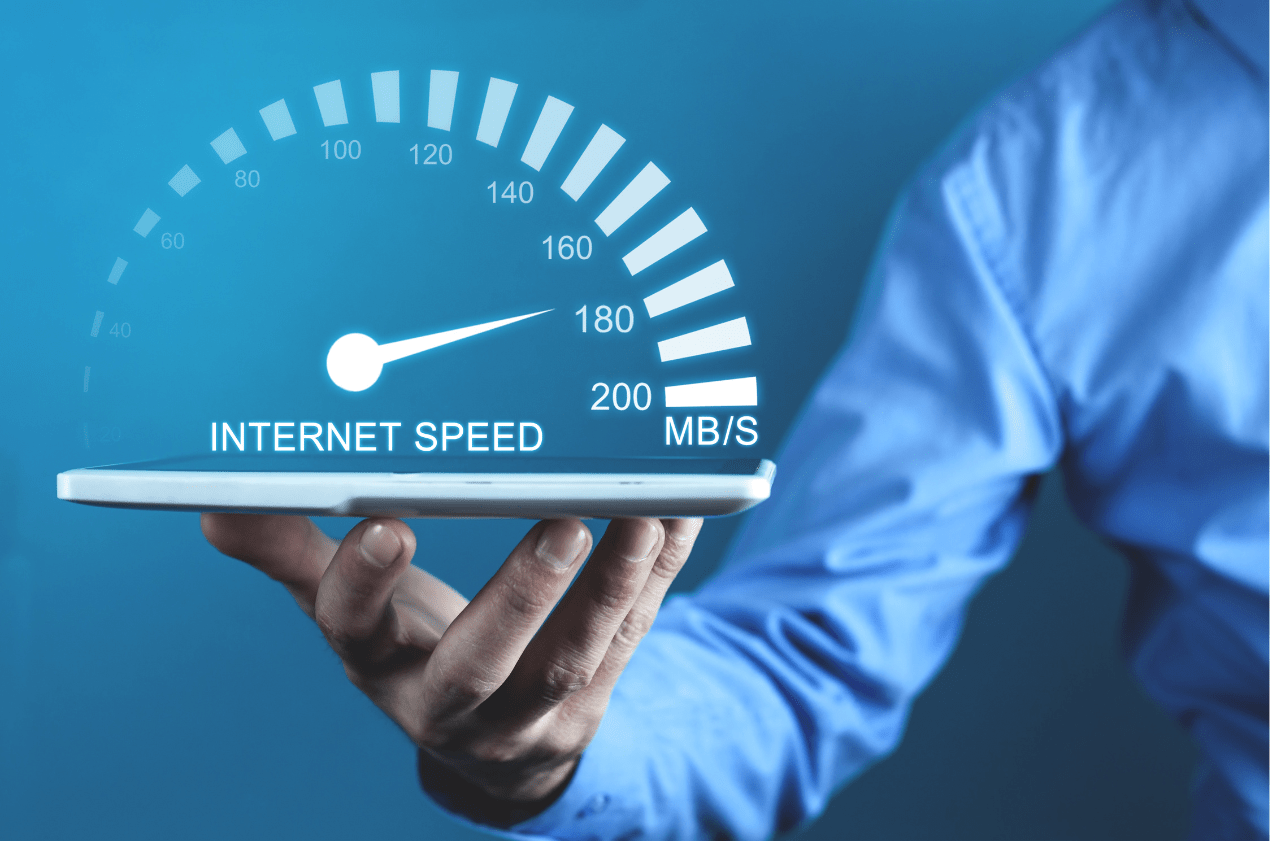
How Much Does LiFi Cost?
Learn about the cost of Lifi in 2025. We explain the cost components along with a comparison to WiFi internet. Click to know more about LiFi Price.

How Much Does LiFi Cost?
LiFi, short for Light Fidelity, is transforming wireless communication by leveraging light waves for data transmission. Unlike WiFi, which uses radio frequencies, LiFi relies on LED lights, enabling high-speed, secure, and interference-free connectivity. However, many potential users often ask, "How much does LiFi cost?" Understanding the LiFi price requires a closer look at its components, benefits, and applications. This article provides an in-depth exploration of the cost of LiFi, its comparison with WiFi, and how Oledcomm’s innovative solutions redefine connectivity.
Understanding the Cost Components of LiFi
The LiFi price is determined by a combination of equipment, installation, and operational costs. Each aspect reflects the advanced technology and unique benefits LiFi offers.
1. Equipment Costs
The LiFi router price includes advanced hardware like transmitters, repeaters, receivers and accessories that facilitate light-based data transmission. For instance, Oledcomm’s LiFiMAX® series combines cutting-edge technology with high-performance capabilities. These routers and access points enable seamless communication over light, but their sophistication makes them more expensive than traditional WiFi routers.
2. Installation Costs
Unlike WiFi, which relies on radio waves, LiFi requires specialized LED lights for data transmission. Retrofitting existing lighting systems to integrate LiFi can add to the upfront expense.. Additionally, LiFi’s simplicity in deployment—requiring minimal wiring—offsets some of these expenses.
3. Maintenance and Operational Costs
A significant advantage of LiFi is its energy efficiency. LED lights used in LiFi systems consume less power compared to traditional wireless setups. This makes the cost of LiFi per month potentially lower in the long term. Maintenance is minimal.
4. Monthly Costs
For users wondering, "How much does LiFi cost a month?", the answer varies depending on usage and scale. Enterprises relying on high-speed and secure networks may incur higher monthly costs than smaller setups. However, the value derived from its speed, security, and reliability often outweighs these expenses.
Is LiFi Cheaper than WiFi?
When evaluating the cost of LiFi versus WiFi, the upfront investment for LiFi is typically higher. WiFi technology, with decades of development and widespread adoption, has become highly affordable. However, LiFi’s unique capabilities position it as a premium choice for specific applications.
1. Low latency
LiFi provides low latency internet which is ideal for a variety of tasks like virtual reality, IoT applications, and real-time data sharing.
2. Security
LiFi’s light-based transmission ensures data remains confined within a room, unlike WiFi signals that extend beyond physical barriers. This feature makes LiFi far more secure, particularly for industries like defense and finance. By investing in LiFi, organizations mitigate the risk of hacking and unauthorized access.
3. Reliability
LiFi eliminates interference from electromagnetic waves, offering stable connectivity even in crowded environments. This advantage makes LiFi indispensable for hospitals, factories, and other critical facilities.
While WiFi remains the more affordable option for general use, LiFi’s advanced features justify its price in environments where speed, security, and reliability are paramount.
Why Paying More for LiFi is Justified
The higher LiFi price reflects its superior technology and long-term benefits. Here’s why investing in LiFi makes sense:
1. Energy Efficiency
LiFi systems use LED lights, which consume less power than traditional lighting and WiFi systems. This dual functionality—providing both lighting and internet—reduces energy costs and promotes sustainability.
2. Enhanced Connectivity
LiFi can connect multiple devices simultaneously without compromising speed or stability. This capability makes it particularly valuable in settings like smart homes, educational institutions, and industrial automation.

3. Scalability and Future-Proofing
As data demands grow, LiFi offers a scalable solution that accommodates emerging technologies like IoT and smart cities. Investing in LiFi now ensures readiness for future connectivity needs.
4. Eco-Friendly Operation
LiFi aligns with global sustainability efforts by minimizing power consumption and reducing reliance on radio waves. Its use of invisible light as a medium is inherently green, making it a responsible choice for modern industries.
Oledcomm’s LiFi Solutions
Oledcomm, a global pioneer in LiFi technology, delivers innovative solutions tailored for diverse industries, addressing unique connectivity challenges with light-based communication systems. Their offerings include:
- LiFiMAX: Ideal for office environments, LiFiMAX provides high-speed and secure connectivity. It supports fast data transfers, HD video communication, and seamless integration into professional setups, ensuring maximum efficiency for modern workplaces.
- SOLERIS: This solution is tailored for military applications, offering robust, secure, and interference-free communication in high-risk zones. Its lightweight design and rapid installation capability make it indispensable for remote and mission-critical deployments.
- Point-to-Point (P2P): Designed for industrial and military use, this solution supports long-distance, RF-free communication over distances of 25 to 500 meters. It ensures high-speed data transmission and is built for applications requiring secure, interference-resistant connectivity.
Beyond these specialized solutions, LiFi technology demonstrates unmatched versatility. It can transform sectors such as education (e.g., enabling connected university campuses), aerospace (e.g., optimizing in-flight and ground communications), and transport and mobility (e.g., vehicle-to-infrastructure communication). Oledcomm's offerings showcase the potential of LiFi to revolutionize connectivity across various industries, meeting modern demands for speed, security, and reliability.
Conclusion
While the cost of LiFi may initially seem higher than traditional wireless technologies, its unparalleled benefits make it a worthwhile expense. Questions like "How much does LiFi cost a month?" are best answered by considering the long-term value LiFi delivers—from reducing inefficiencies to enhancing network reliability.
As adoption grows and technology advances, LiFi is poised to become a cornerstone of modern connectivity, driving innovation across industries like education, aerospace, and transport. For those ready to embrace the future of wireless communication, Oledcomm provides tailored solutions that redefine connectivity with light. Explore their offerings and discover how LiFi can transform your digital experience.
LiFi is generally more expensive than WiFi due to its advanced technology and specialized hardware requirements. While the upfront investment for LiFi routers and installation is higher, its superior speed in dense environments, security, and interference-free connectivity make it a valuable option for industries needing robust networks. Over time, LiFi can offer cost savings through energy efficiency and reduced maintenance. WiFi remains more affordable for general use.
The cost of LiFi comprises:
- Equipment Costs: Includes, transmitters, receivers and accessories which are more expensive than WiFi routers.
- Installation Costs: Retrofitting existing infrastructure or integrating LiFi-enabled systems adds to initial expenses.
- Operational Costs: Energy-efficient LEDs lower long-term expenses.
- Maintenance Costs: Minimal but regular speed-tests on systems are advised .
The monthly cost of LiFi depends on its usage and scale. For enterprise setups, LiFi price per month may be higher due to specialized equipment and high-speed demands. However, in environments with existing LED infrastructure, energy efficiency can lower operational expenses. Personal or smaller setups may find monthly costs more manageable but still higher than WiFi.
Recent articles

Categories
See some more...



